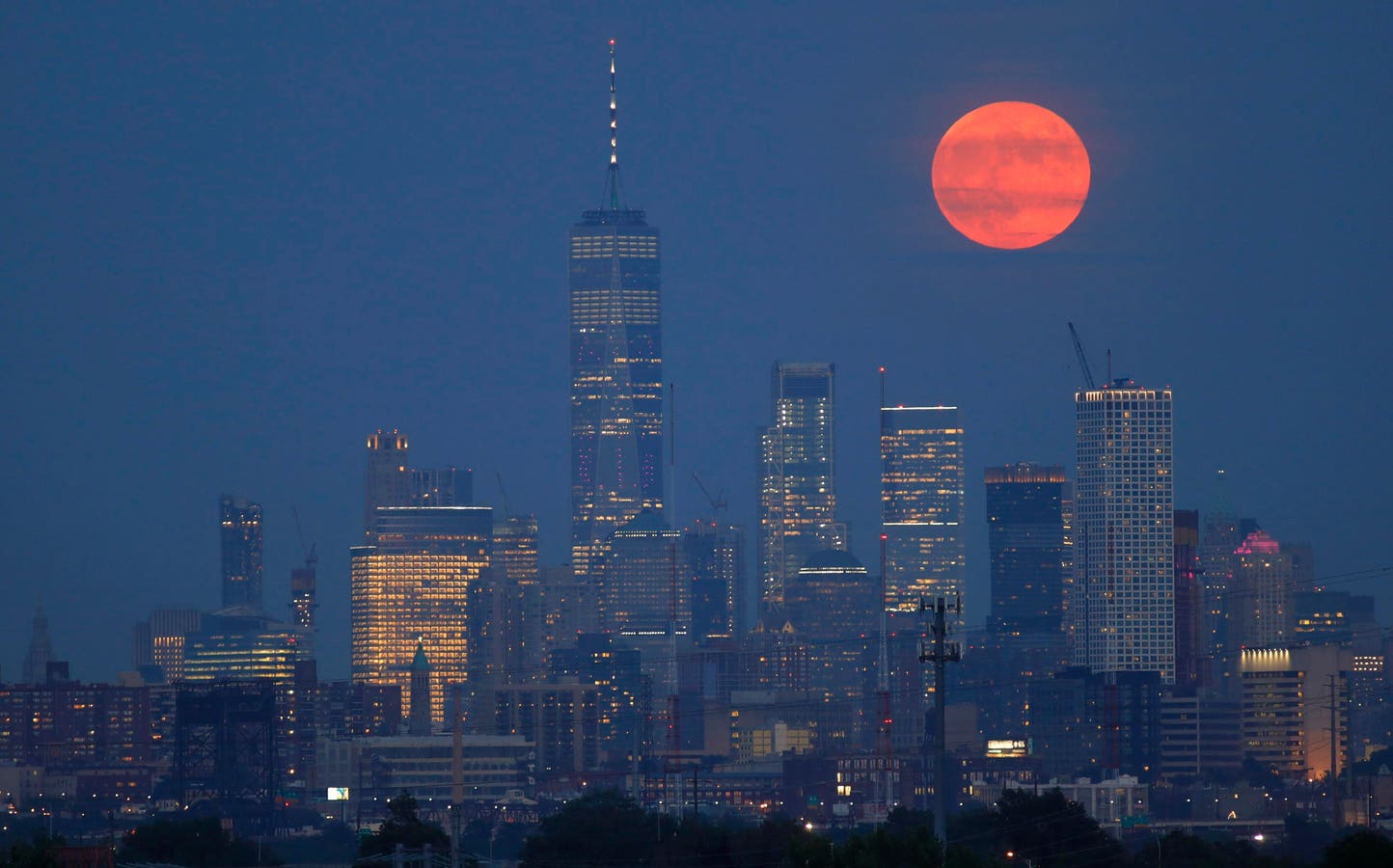The full buck moon rises above the skyline of lower Manhattan and One World Trade Center in New York … More
Each Monday, I pick out North America’s celestial highlights for the week ahead (which also apply to mid-northern latitudes in the Northern Hemisphere). Check my main feed for more in-depth articles on stargazing, astronomy, eclipses and more.
The Night Sky This Week: July 7-13, 2025
As July unfolds, the night sky is busy with action. A nearly full moon begins the week with a visit to the red supergiant Antares. Venus continues to dazzle as the “Morning Star” reaches its highest pre-dawn altitude, while Jupiter makes a subtle return to the morning twilight. By week’s end, a full “Buck Moon” lights up the sky, and two summer meteor showers ramp up. Here’s everything you need to know about stargazing and astronomy this week:
Monday, July 7: Moon Meets Antares
Monday, July 7: Moon Meets Antares
Look southeast after sunset tonight, and you’ll see a 92%-illuminated waxing gibbous moon just four degrees below Antares, the brightest star in the constellation Scorpius.
Tuesday, July 8: Venus Reaches Its Peak
Tuesday, July 8: Venus Reaches Its Peak
Venus reaches its highest point in the morning sky today during its current apparition as the bright “Morning Star.” Look to the east-northeast about 30 minutes before sunrise, and there’ll be no mistaking the bright planet about 25 degrees above the horizon. From now through July 21, it will be especially prominent in the pre-dawn hour.
Wednesday, July 9: Jupiter Reappears
After a few weeks, hidden by the sun’s glare as, from our point of view, it passed behind our star, the giant planet Jupiter this morning returns to the pre-dawn sky. Catch it rising in the constellation Gemini just before sunrise, shining at 1.9 magnitude. Venus, meanwhile, continues its eastward journey, edging closer to Aldebaran in the constellation Taurus.
Thursday, July 10: The Full ‘Buck Moon’ Rises
Tonight marks the first full moon of summer in the Northern Hemisphere — the “Buck Moon.” Named for the fresh antler growth of deer during this time, it’s also known as the Hay Moon and Thunder Moon. The moon officially reaches full phase at 4:38 p.m. EDT, but the best show will be at moonrise where you are. Head outside at dusk and watch it rise as an enormous, orange orb on the eastern horizon. Because this full moon comes shortly after the solstice, it will stay low in the southern sky and set in the southwest during dawn.
Saturday, July 12: Venus Meets Aldebaran
Saturday, July 12: Venus Meets Aldebaran
Rise early this morning for a striking close encounter in the constellation Taurus. Venus will appear about three degrees above Aldebaran, while just above will be the shimmering Pleiades star cluster. It’s a spectacular target for the naked eye. Today is their closest approach, but this trio will remain fabulous for a few more mornings yet.
Sunday, July 13: Summer Meteor Season Begins
Tonight brings the official start of two overlapping meteor showers — the Delta Aquarids and Alpha Capricornids. Though neither will peak until July 30, tonight is the first night when shooting stars may grace the sky. The showers tend to produce slow, steady meteors, best viewed from dark locations in the pre-dawn hours. They’re best seen as an added bonus to a stargazing session; don’t make special plans for these two.
The times and dates given apply to mid-northern latitudes. For the most accurate location-specific information, consult online planetariums like Stellarium.
Wishing you clear skies and wide eyes.









